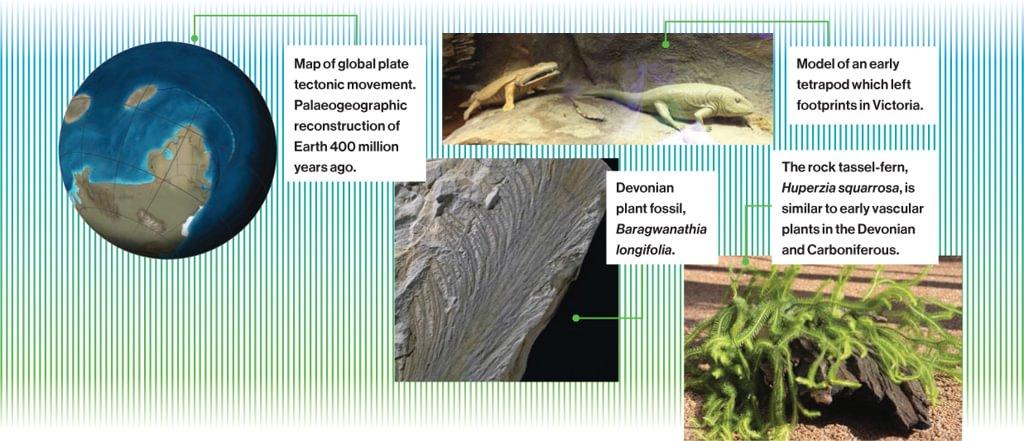
Map of global plate tectonic movement. Palaeogeographic reconstruction of Earth 400 million years ago.
Devonian plant fossil, Baragwanathia longifolia.
Model of an early tetrapod which left footprints in Victoria.
The rock tassel-fern, Huperzia squarrosa, is similar to early vascular plants in the Devonian and Carboniferous.
Where most people see a weirdly shaped rock, a palaeontologist might see how an animal lived and died millions of years ago. So how can that keen expert vision be brought to the general public?
Transporting people back in time through scientific discovery is exactly what spaces such as museums aim to do. And Melbourne Museum has a permanent exhibition that tries to get visitors to imagine what it would be like to walk through time in the Australian state of Victoria.
UNFATHOMABLE TIME
I am greeted by a large wall with the exhibition's name: “600 Million Years: Victoria Evolves”. We all know 600 million years is a long time. But just how long is mind boggling.
If 600 million years were shrunk down to a year, then the 300,000 years or so that modern humans have been around would amount to less than 4.5 hours. The Pyramids of Giza (which are about 4,500 years old) would have appeared less than four minutes before the year was up.
Even the mighty dinosaurs were only around for about a quarter of that 600-million-year time.
To help explain representing such a vast amount of time in an exhibition, I am welcomed by Kate Phillips, Melbourne Museum's senior curator of science exhibitions.
Phillips led the team which put the “Victoria Evolves” exhibition together – a project which was finished in 2011.
“We have a few interpretive devices to help orient people in time,” Phillips says, pointing to a series of maps which estimate how the continents moved and shorelines changed over the aeons.
“So, this was the year that life evolved in the oceans, but it's pretty mind boggling


